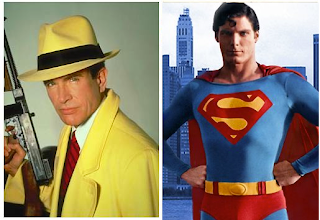Yes, “Kick-Ass” does have weapons, tight leather costumes, a villain and bad-ass stunts. So it’s a superhero film, right? But it makes fun of itself – and the superhero genre as a whole – so perhaps it’s a comedy.
In fact, “Kick-Ass” is part of the superhero genre, but that sort of film has been done so many times in recent years that “Kick-Ass” kicks the genre in the ass by creating a parody. We can compare this to romantic comedies by looking at a recent timeline.
2003: “How to Lose a Guy in 10 Days”
“Love Actually”2004: “50 First Dates”
2005: “Hitch”
“Just Friends”
“The Wedding Date”
2006: “Date Movie”
“Love Actually”2004: “50 First Dates”
2005: “Hitch”
“Just Friends”
“The Wedding Date”
2006: “Date Movie”
“Date Movie” was a spoof on the romantic comedy genre that had been so overused in recent years. At this time it begins to make fun of the genre and the audience is aware of that.
That’s where we get the temporary end of the genre cycle. After the genre has its heyday, the parodic period enters. Then the genre leaves the big screen for a while until it makes a return in later years.
The parodic stage blatantly makes fun of the genre’s conventions. It does so by using clichés that the audience recognizes and accepts through comedic presentation (Giannetti & Leach, 58-59). Through Giannetti and Leach's definition of the parodic stage, we can explore why "Kick-Ass" fits into this category.
The most outright mockery of the superhero genre in "Kick-Ass" is when Dave Lizewski excitedly asks, "Why has no one thought of this before?!" It's ironic because the film industry had just gone through a superhero phase:
2003: "Daredevil," "The League of Extraordinary Gentlemen," "Hulk"
2004: "Catwoman," "Hellboy"
2005: "Batman Begins," "Fantastic Four"
2008: "Iron Man," "The Incredible Hulk"
2009: "Watchmen"
Those are just some of the superhero films from the 2000s. After so much villain-killing and leather-wearing, it was time for some comedic relief. "Kick-Ass" gives us that, and we were certainly ready for it and understood its jabs at the superhero genre. So when Dave asks that ironic question, we knew it is a sarcastic mockery.
Another important aspect of Matthew Vaughn's "Kick-Ass" is that it is self-reflexive. It's aware of itself as a movie and doesn't try to make the audience forget it's watching a fictional world. This is primarily accomplished through Dave's dialogue and narrative. He talks about his mother dying "from an aneurism in the kitchen... as opposed to a gunman in the alley." That's the kind of mother-death the audience has come to know and expect from the genre. That's how it worked in Batman, in the dark Gotham City Crime Alley. Dave knows we're expecting this and almost apologizes: "So if you were hoping for any 'I will avenge you mother!' you're out of luck." Later he even tells the audience that he's talking to us. He says we already know he'll survive "because I'm talking to you right now."
This kind of cliche narrative mocks the superhero genre in a comedic way, and puts it into the parodic stage of the genre cycle, so much so that it could be its own genre: the supercom.
The most outright mockery of the superhero genre in "Kick-Ass" is when Dave Lizewski excitedly asks, "Why has no one thought of this before?!" It's ironic because the film industry had just gone through a superhero phase:
2003: "Daredevil," "The League of Extraordinary Gentlemen," "Hulk"
2004: "Catwoman," "Hellboy"
2005: "Batman Begins," "Fantastic Four"
2008: "Iron Man," "The Incredible Hulk"
2009: "Watchmen"
Those are just some of the superhero films from the 2000s. After so much villain-killing and leather-wearing, it was time for some comedic relief. "Kick-Ass" gives us that, and we were certainly ready for it and understood its jabs at the superhero genre. So when Dave asks that ironic question, we knew it is a sarcastic mockery.
Another important aspect of Matthew Vaughn's "Kick-Ass" is that it is self-reflexive. It's aware of itself as a movie and doesn't try to make the audience forget it's watching a fictional world. This is primarily accomplished through Dave's dialogue and narrative. He talks about his mother dying "from an aneurism in the kitchen... as opposed to a gunman in the alley." That's the kind of mother-death the audience has come to know and expect from the genre. That's how it worked in Batman, in the dark Gotham City Crime Alley. Dave knows we're expecting this and almost apologizes: "So if you were hoping for any 'I will avenge you mother!' you're out of luck." Later he even tells the audience that he's talking to us. He says we already know he'll survive "because I'm talking to you right now."
This kind of cliche narrative mocks the superhero genre in a comedic way, and puts it into the parodic stage of the genre cycle, so much so that it could be its own genre: the supercom.
Works Cited
•Giannetti, Louis D. & Jim Leach. Understanding Movies (Second Edition). Toronto, ON : Prentice Hall, 2001
•Giannetti, Louis D. & Jim Leach. Understanding Movies (Second Edition). Toronto, ON : Prentice Hall, 2001


